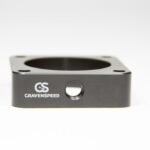Wisdom teeth, those late bloomers of the dental world, erupting, or attempting to erupt, long after the rest of your pearly whites have settled into their designated spots. This final act of dental morphogenesis is rarely a silent one. Most individuals experience some degree of discomfort, sometimes escalating to debilitating pain. But what exactly does wisdom teeth pain *feel* like? The answer, predictably, isn’t a simple one.
The Cardinal Sign: Aching Pressure.
The most common complaint is a persistent, dull ache at the back of the jaw. This isn’t a sharp, stabbing pain; rather, it’s a deep-seated pressure emanating from the site of the emerging tooth. It can feel like your jaw is being constantly squeezed, a sensation that intensifies over time. This pressure arises from the tooth attempting to navigate through bone and tissue, often encountering resistance from existing teeth. Consider the inherent awkwardness: these newcomers are trying to squeeze into an already crowded dental metropolis. The surrounding structures, unsurprisingly, protest.
Referred Pain: A Confounding Complication.
Pain associated with wisdom teeth frequently engages in the perfidious act of “referred pain,” meaning the sensation is felt in areas distant from the actual source. This can manifest as headaches, earaches, or even pain in the temples. The trigeminal nerve, a major cranial nerve responsible for sensation in the face, is often implicated in this phenomenon. Its intricate network of branches allows pain signals to be misinterpreted and projected to seemingly unrelated locations. This referred pain can be particularly frustrating, as individuals may initially misattribute the discomfort to other causes, delaying proper diagnosis and treatment. It can even trigger secondary muscular responses in the head and neck, exacerbating the overall sense of unease.
Inflammation and the Associated Malaise.
The eruption of wisdom teeth inevitably leads to inflammation of the surrounding gingival tissue. This inflammation, medically termed pericoronitis, is a hallmark of problematic wisdom teeth. The gums become swollen, tender, and often bleed easily. This isn’t merely a local irritation; it can contribute to a systemic feeling of malaise. The body’s inflammatory response releases cytokines, signaling molecules that can affect various physiological processes. This can result in fatigue, irritability, and even a mild fever. The edematous tissue can also make it difficult to open your mouth fully, further hindering eating and speaking. This trismus, or “lockjaw,” adds another layer of discomfort and frustration.
The Sharp Sting of Impingement.
If a wisdom tooth is impacted, meaning it’s blocked from fully erupting, the pain can take on a sharper, more localized quality. Impacted teeth often press against the roots of adjacent molars, causing pain that radiates along the jawbone. This impingement can even damage the roots of the neighboring teeth, leading to further complications. The sensation might be described as a throbbing ache punctuated by sharp, intermittent stabs of pain. The degree of discomfort is often directly proportional to the degree of impaction and the proximity to other dental structures.
Nerve Sensitization: A Prolonged Ordeal.
Chronic inflammation from impacted or partially erupted wisdom teeth can lead to nerve sensitization. This means that the nerves in the area become more reactive to stimuli, resulting in a heightened perception of pain. Even minor pressure or temperature changes can trigger intense discomfort. The pain may also become more persistent and less responsive to over-the-counter analgesics. Nerve sensitization is a complex process involving changes in the nervous system, and it can significantly impact an individual’s quality of life. It highlights the importance of addressing wisdom teeth issues proactively before they escalate into chronic pain conditions.
The Harbinger of Infection.
Partially erupted wisdom teeth create a perfect breeding ground for bacteria. The flap of gum tissue covering the tooth, known as the operculum, can trap food particles and debris, leading to infection. This infection, if left untreated, can spread to surrounding tissues and even into the bloodstream. The pain associated with a wisdom tooth infection is typically intense, throbbing, and accompanied by redness, swelling, and pus discharge. It may also be associated with a foul taste in the mouth and difficulty swallowing. A fever and swollen lymph nodes are further indicators of a more systemic infection. Immediate medical attention is crucial in such cases to prevent serious complications.
Variability is the Norm: The Subjective Experience.
It is vital to remember that the experience of wisdom teeth pain is highly subjective. Some individuals breeze through the eruption process with minimal discomfort, while others endure excruciating pain. Factors such as the individual’s pain threshold, the degree of impaction, and the presence of infection all contribute to the overall experience. A high pain tolerance may mask underlying problems, delaying necessary intervention. Conversely, individuals with a lower pain threshold may seek treatment earlier, preventing potential complications. The perception of pain is modulated by complex interactions between the nervous system, the endocrine system, and psychological factors.
In conclusion, wisdom teeth pain is a multifaceted experience that can manifest in various ways, from a dull ache to sharp, radiating pain. Recognizing the nuances of this pain is crucial for prompt diagnosis and appropriate management. Ignoring the signals can lead to complications far exceeding the initial discomfort. Don’t let those late bloomers turn into a dental dystopia.









Leave a Comment